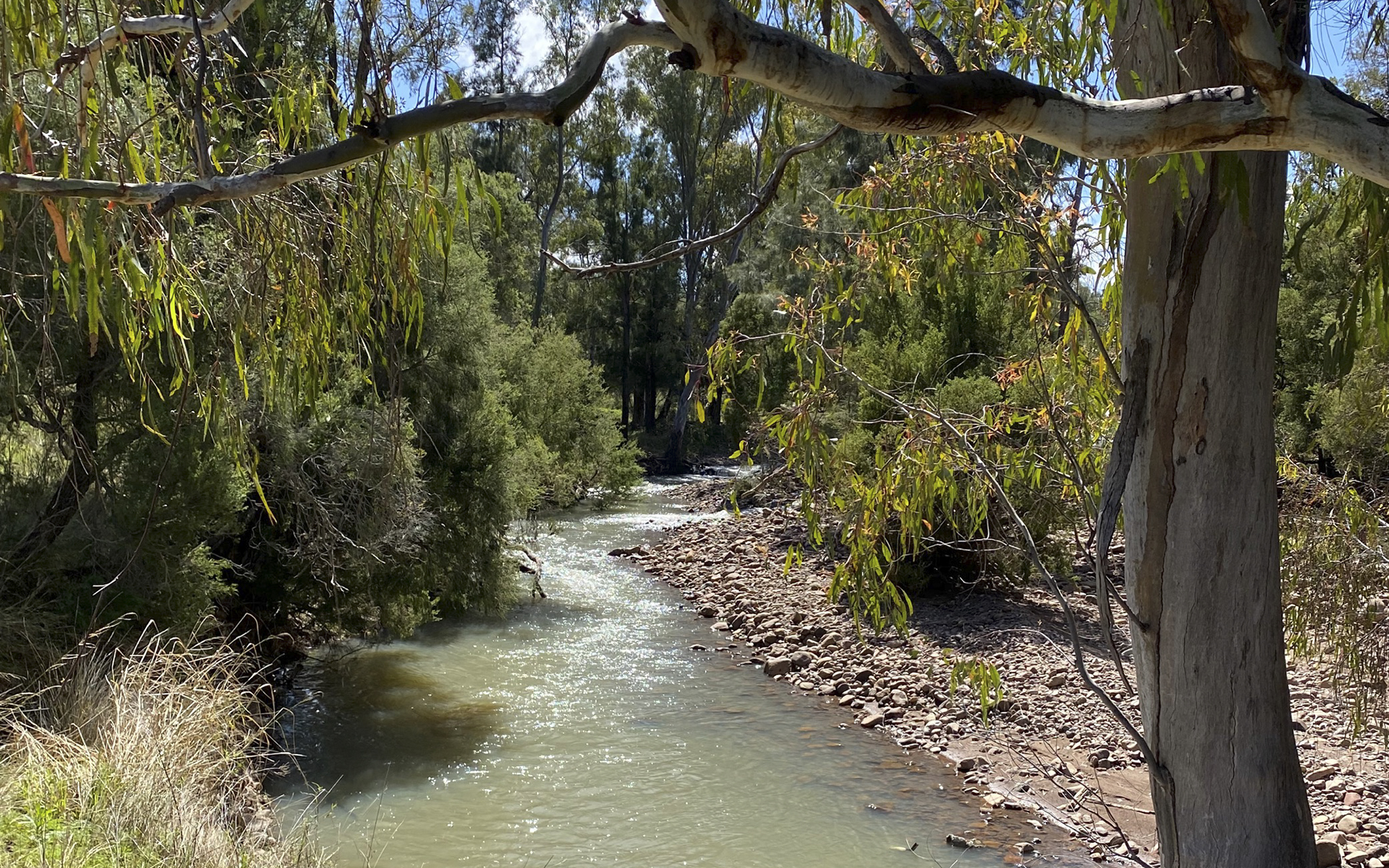Why monitor groundwater dependent ecosystems?

There are many different types of environments that depend on groundwater to survive. They are called groundwater dependent ecosystems and can include wetlands, streams, lakes, swamps, aquifers, springs, caves and some vegetation communities. They are important habitats for native animals such as fish, frogs and waterbirds.
Groundwater dependent ecosystems need access to groundwater to meet all or some of their water requirements to maintain their communities of plants and animals.
Groundwater dependence can vary over time. When large amounts of groundwater are extracted for agriculture or industry use, less water may be available for these ecosystems. Groundwater quantity and quality may also be affected by threats such as climate change, grazing, change in land use management and intensification of agriculture and urban development.

Report
The 2022-2024 Groundwater dependent ecosystems annual report introduces projects that have commenced or were further developed during this period of the Environmental Outcomes Monitoring and Research Program.
Download the report: Groundwater dependent ecosystems (PDF. 15.06MB)It is important to identify ecosystems that are dependent on groundwater to meet legislative and management outcomes in New South Wales. Potential groundwater dependent ecosystems have been identified and an ecological value assigned to those vegetation communities and wetlands. The data can be downloaded from the SEED Portal (The Central Resource for Sharing and Enabling Environmental Data in NSW).
Several research projects are underway to understand the response of vegetation, wetland, stream and aquifer ecosystems to changing water quality and groundwater levels. We are monitoring changes in ecosystem health using biotic indicators such as vegetation community, stygofauna and microbe community responses.
We are also investigating the use of vegetation environmental DNA as a method to detect groundwater reliance. The degree of groundwater dependence of vegetation is relatively unknown across large spatial areas, specifically when access to groundwater is crucial for life cycle phases (such as flowering, fruiting, survival of young trees).
Understanding the response of groundwater dependent ecosystems to changing water availability is critical to the management of these ecosystems under the Water Management Act. This research will help us to evaluate the effectiveness of water management actions to protect the condition and extent of groundwater dependent ecosystems in NSW.
Our research projects include:
- Evaluation of vegetation health with groundwater level changes using remote sensing indices and field vegetation health indicators.
- Establishing the links between groundwater ecosystem health, groundwater dependent vegetation and wetland health use in the Murray Darling Basin (collaboration with Macquarie University).
- Using eDNA in groundwater to detect tree water use (collaboration with Macquarie University).
- Predicting the impacts of groundwater drawdown on groundwater ecosystems (ARC Linkage LP190100927, collaboration with Macquarie University and University of New South Wales).
- Reanalysis of groundwater health in alluvial aquifers in the Murray-Darling Basin and associated thresholds for groundwater dependent ecosystems (collaboration with Macquarie University).
- Establishing the links between groundwater ecosystem health, groundwater dependent vegetation and wetland health in coastal catchments (collaboration with Macquarie University).
- A predictive stressor-response model for the ecosystem health of coastal aquifers (ARC Linkage application, collaboration with Macquarie University and University of New South Wales).
Relevant publications
- Kuginis L, Dabovic J, Byrne G, Raine A and Hemakumara, H (2016) Methods for the identification of high probability groundwater dependent ecosystems, DPI Water, Sydney High probability GDE method report
- Dabovic J, Dobbs L, Byrne G and Raine A (2019) A new approach to prioritising groundwater dependent vegetation communities to inform groundwater management in New South Wales, Australia, Australian Journal of Botany, 67, 397-413. https://doi.org/10.1071/BT18213
- Hose GC, Dabovic J, Nelson, T, Pollitt, L and Korbel, K (2022) “Groundwater Dependent Aquatic and Terrestrial Ecosystems”. In Encyclopedia of Inland Waters, Second Edition. https://www.sciencedirect.com/science/article/pii/B9780128191668001183
- Pollitt L, Korbel K, Dabovic J, Chariton A and Hose GC (2022) “Can eDNA be an indicator of tree groundwater use? A perspective”, Marine and Freshwater Research https://www.publish.csiro.au/mf/MF21293
- Korbel KL, Hose GC (2011) A tiered framework for assessing groundwater ecosystem health, Hydrobiologia 661, 329–349. https://doi.org/10.1007/s10750-010-0541-z








